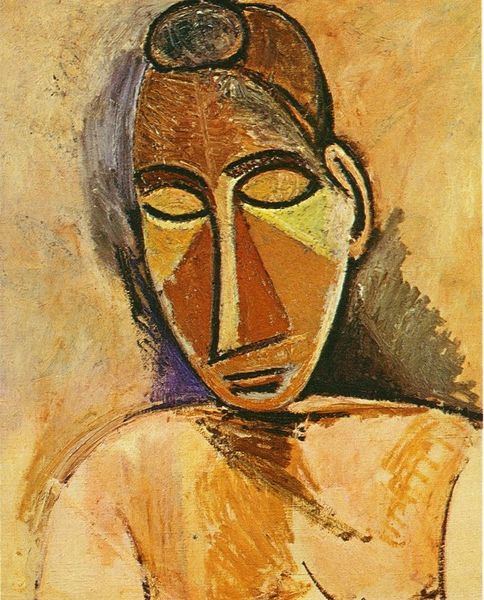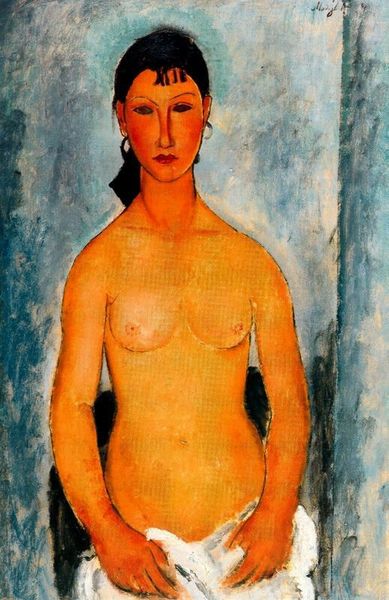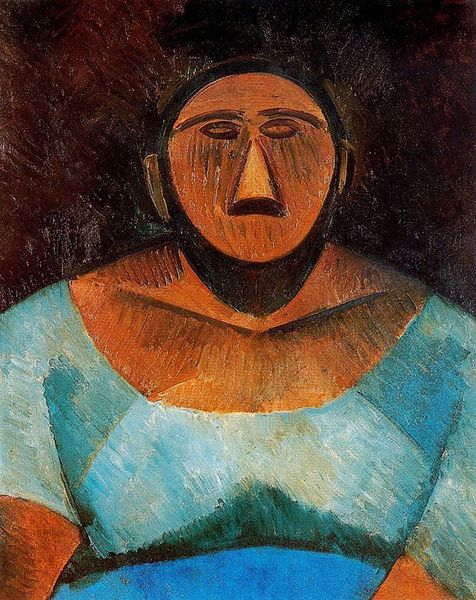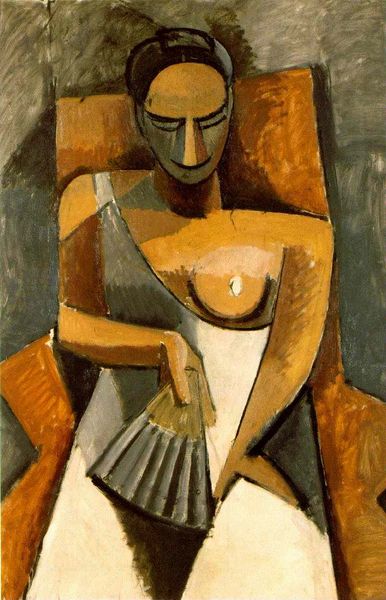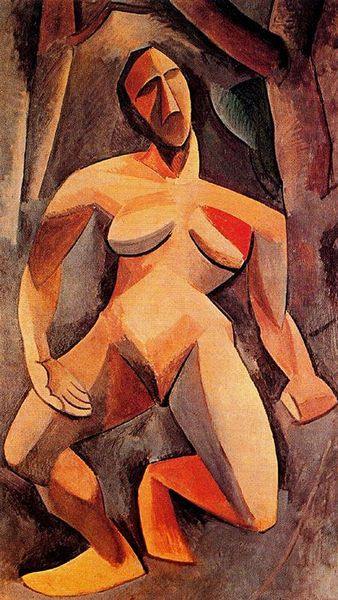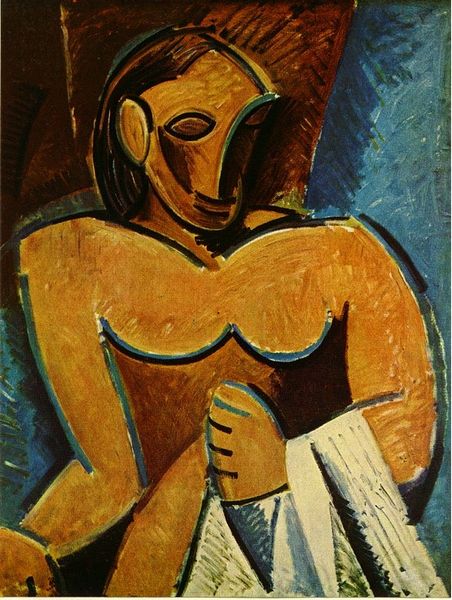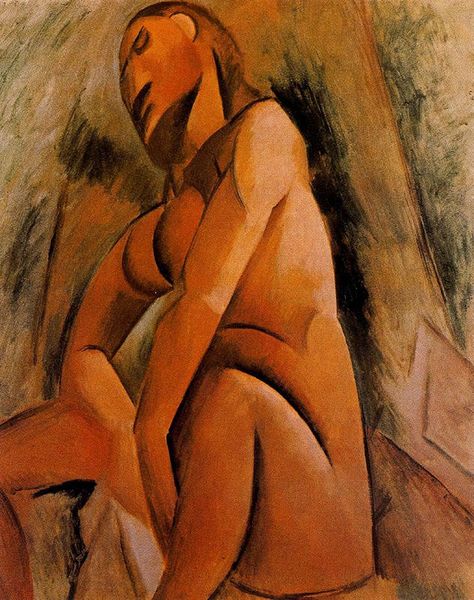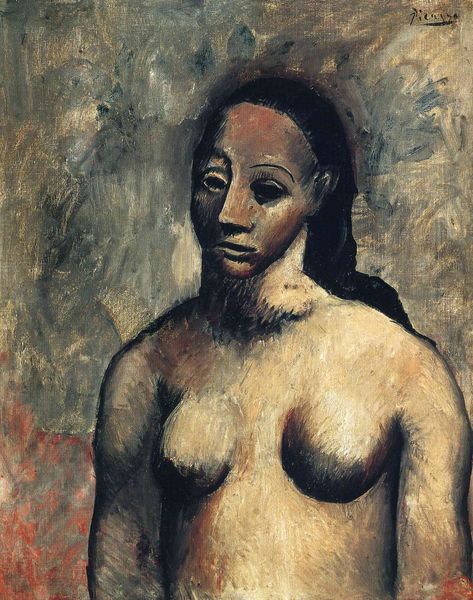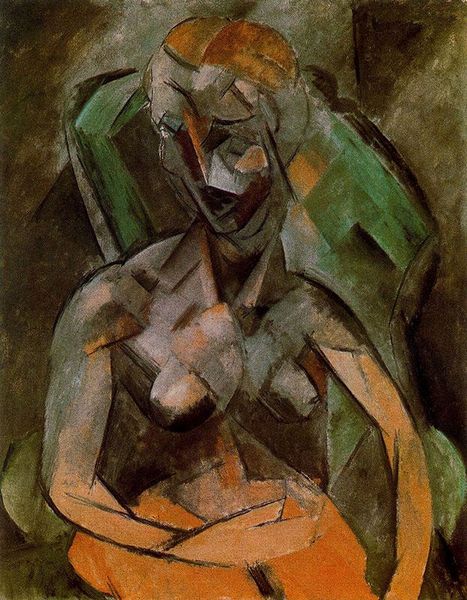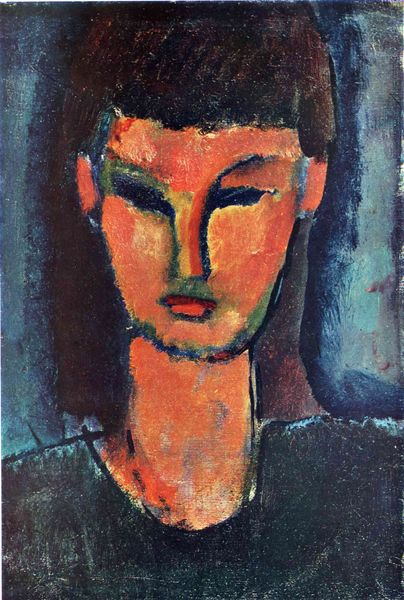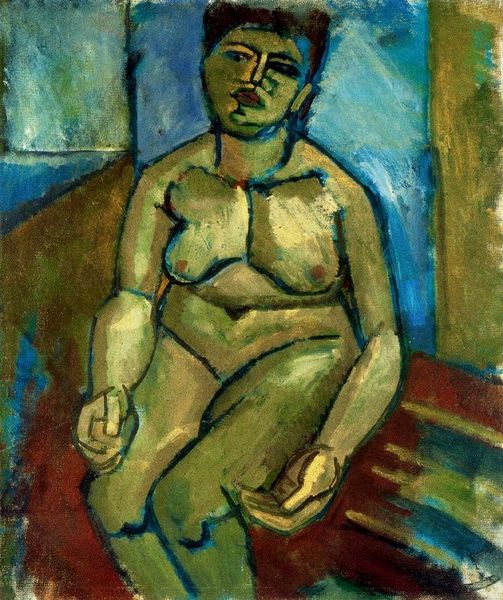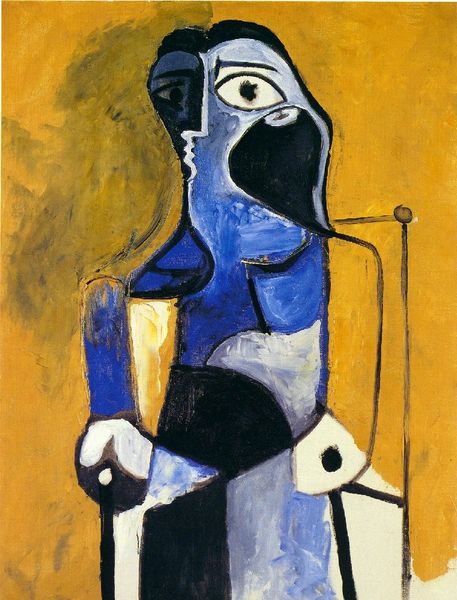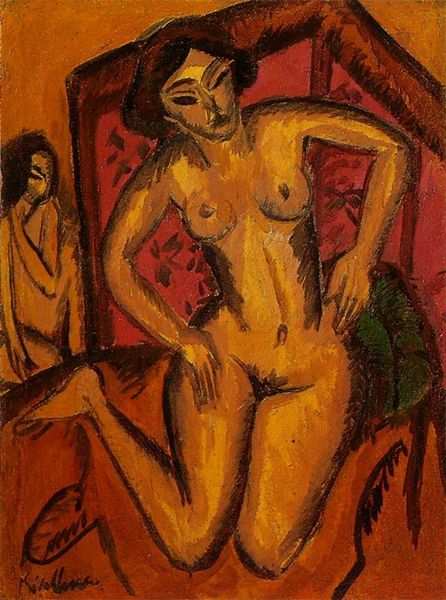
painting, oil-paint
#
portrait
#
cubism
#
painting
#
oil-paint
#
figuration
#
female-nude
#
abstraction
#
nude
#
early-renaissance
Copyright: Public domain US
Curator: Standing before us, we have Picasso's "Female Bust," painted in 1907, rendered in oil paint. Editor: It’s... intense. The stark planes of the face, the unsettling eyes, they create an almost mask-like quality. There’s very little to invite connection with her as a person. Curator: Indeed. What’s interesting is its placement within Picasso's oeuvre, bridging the gap between his earlier works and the full-fledged development of Cubism. This piece speaks volumes about the shifting societal perceptions and representation of the female form. It certainly challenges conventional standards of beauty. Editor: Absolutely. The geometrical simplification is pushing against traditional portraiture that idealised women. It is almost a deliberate subversion, aligning with broader movements that interrogated power structures and patriarchal viewpoints in the representation of women, a reflection on how their objectification had become naturalised. Curator: The deliberate distortion encourages us to confront uncomfortable questions about the power dynamics inherent in the act of looking and representing the female body. He was moving toward abstraction as a powerful tool. Think also about Picasso's broader cultural milieu and colonialism. This piece coincides with a time when he was intensely absorbing and being influenced by African sculpture, something of which is discernable in the strong angular lines, and also a problematic association in light of colonialism's cultural appropriation of African traditions. Editor: A provocative suggestion that certainly needs addressing. Do you think we see it differently in our contemporary, post-colonial context than its original audience would? Curator: I do. I think this era also saw an emergent wave of women demanding recognition and representation on their own terms and so as a depiction of womanhood through solely a male gaze, the bust has become less empowering but more symbolic. Editor: Yes, seeing art like this invites such necessary conversations on the evolution of perspectives. It truly demands revisiting, reinterpreting, and reclaiming narratives within our socio-political context. Curator: Ultimately, “Female Bust” reminds us that art is never created in a vacuum. It is the reflection and also the instigator of social change. Editor: And an ever-evolving dialogue on the intricacies of its meaning and influence.
Comments
No comments
Be the first to comment and join the conversation on the ultimate creative platform.
